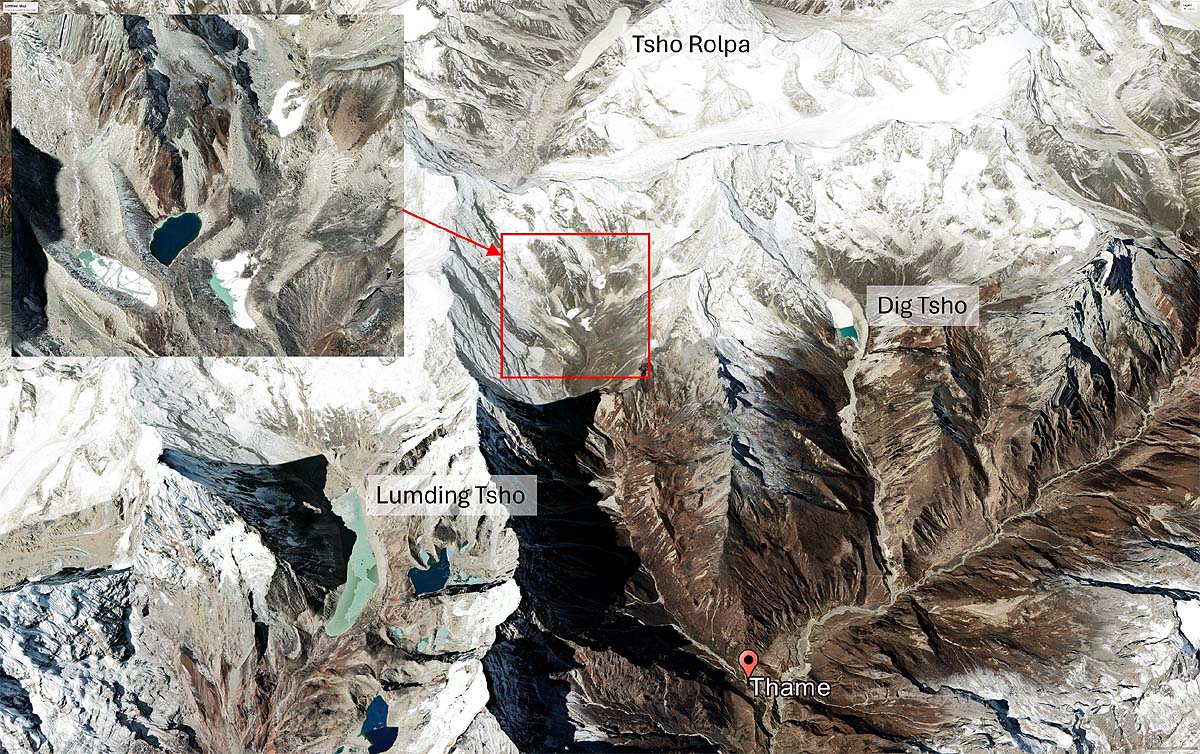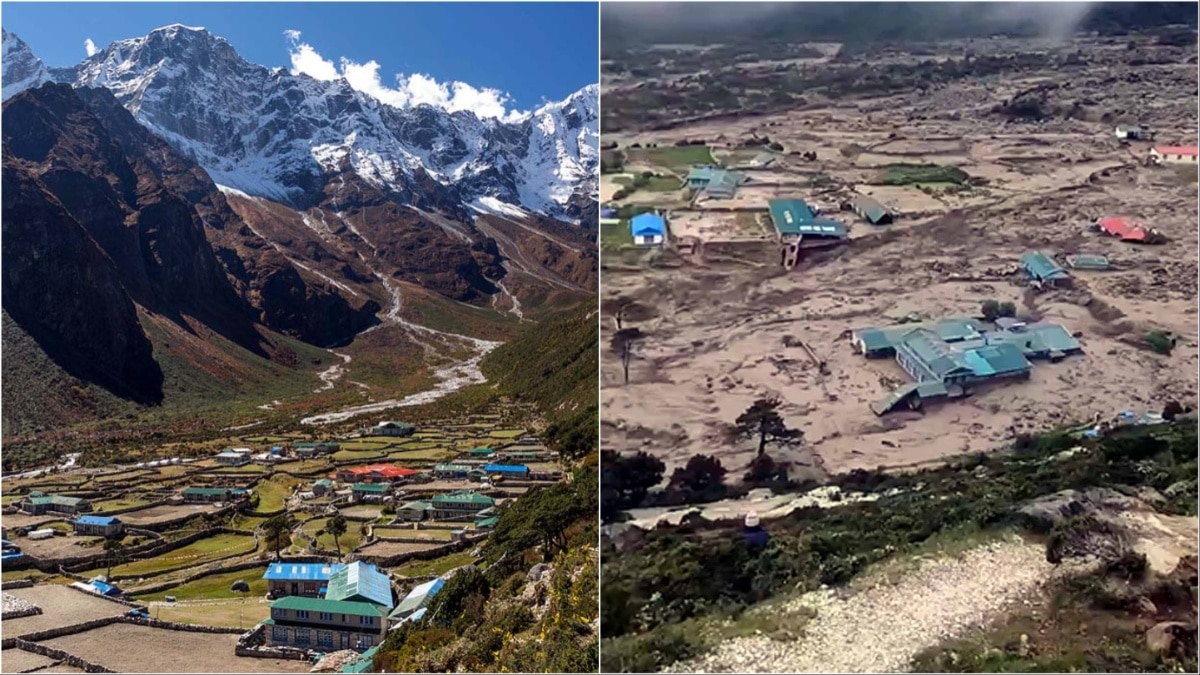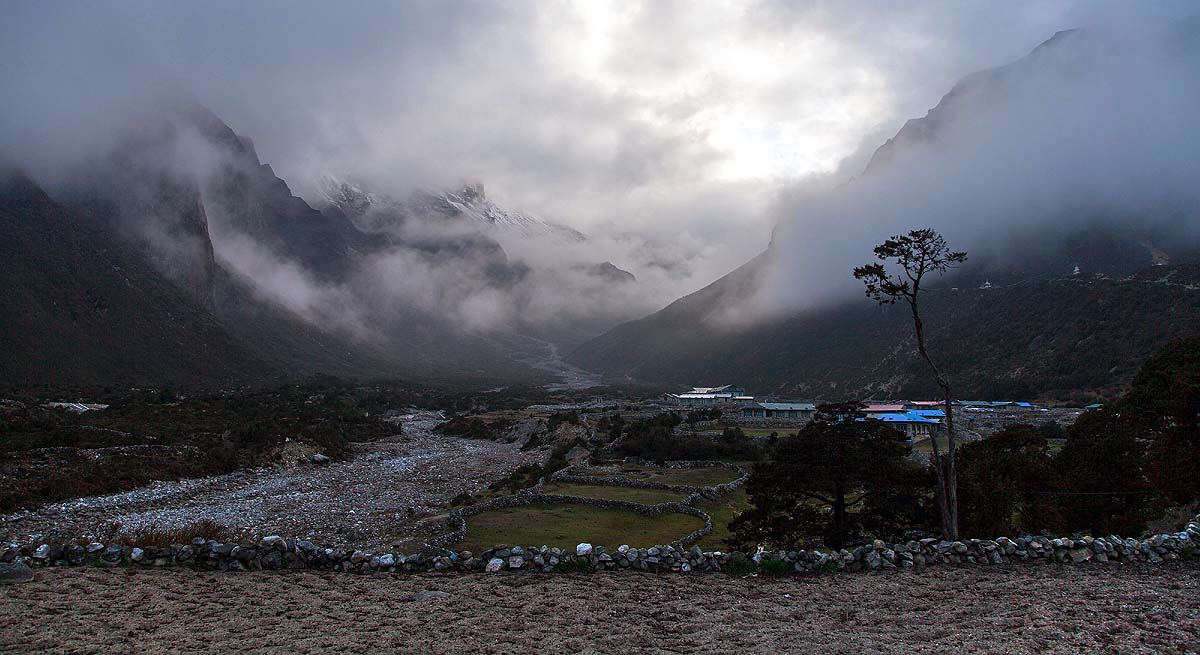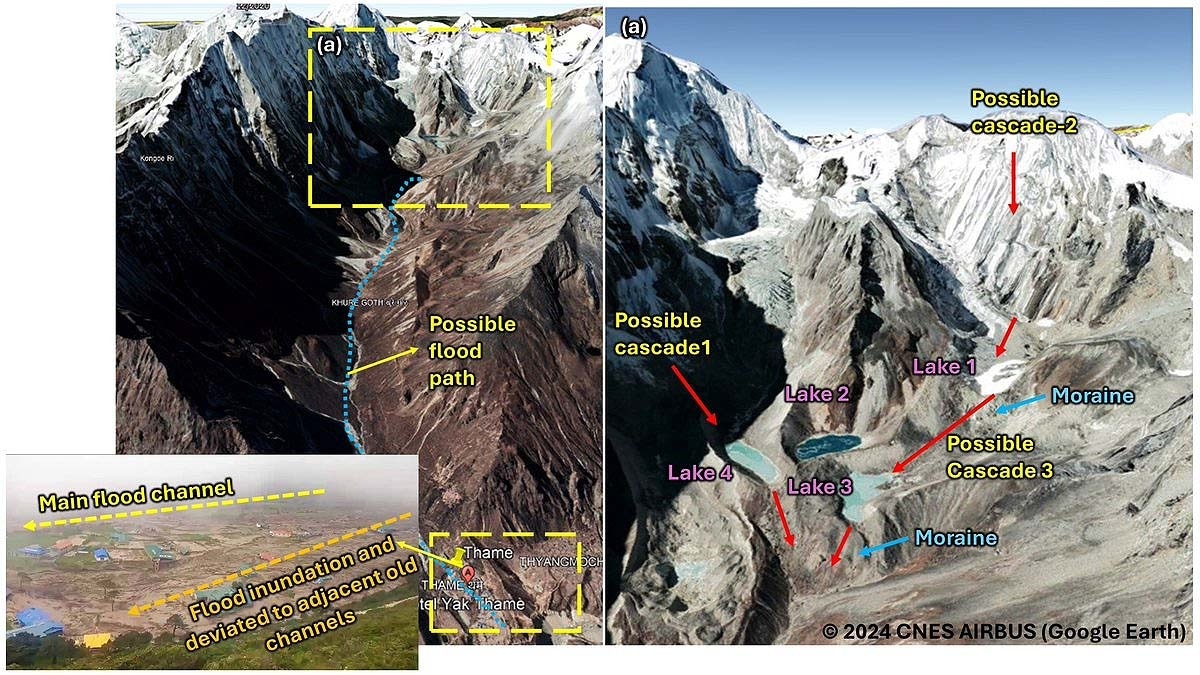A terrible flash flood and landslide occurred yesterday, 16 August 2024, in Thame, the village of Tenzing Norgay, the first Nepali Sherpa to climb Mount Everest. The disaster came flowing rapidly from Everest itself. 45 buildings including houses and hotels of Thame Sherpa village have been destroyed. This incident has happened due to Glacial Lake Outburst Flood (GLOF). That is, due to the breaking of the lake formed in the high altitude area of the Himalayas.
When aajtak.in asked Dr. Asim Sattar, glacier hazard expert and assistant professor at IIT Bhubaneswar, about this, he told that there are four glacial lakes in the upper part of Thame valley. You can see it in the picture below. Dr. Sattar marked them. Then he told that the boundary of Lake 3 was broken. This was a moraine boundary. That is, a wall made of weak soil and stones.
In this picture, Dr. Sattar has clearly explained the path of the sudden flood caused by GLOF. He had shared this information on Twitter handle i.e. X yesterday. Today he was waiting for the satellite to pass over that area. Its data has not been received yet. But a helicopter survey conducted there confirms his possibility.
The helicopter survey revealed the breaking of the lake
The helicopter survey revealed that Lake 3 had breached. Its moraine wall had broken. The water came down rapidly. It eroded the lower part of the mountain in front. After this, it rapidly moved towards Thamhe Sherpa village. This survey was conducted by Khumbu Pasanglhamu Rural Municipality. This confirmed how dangerous glacial lakes are. They can bring devastation to the people living downstream.

Dr. Asim Sattar said that glaciers are melting due to increasing global warming. Lakes are forming. These incidents have increased in the Himalayas in the last few years. Such lakes in the high Himalayas should be investigated so that such incidents do not occur. Scientific investigation should be done so that exposure can be detected.
Earlier in 1985 also GLOF had occurred in this valley
A similar disaster had occurred in the Thame valley earlier in 1985. At that time, there was a snowy area named Dig Sho near the Tashi Lapcha pass. The lake built nearby had broken here. Then the flood from above had destroyed the Thame hydropower. The flow of this flood was also towards the Thame village.

What happened on 16 August 2024?
The breaking of the lake on the Thengbo glacier increased the flow of the Thame river. The other branch of the Thame river, Dudhkoshi, has also been flooded. Landslides occurred. Half of the Thame village has been completely destroyed. This lake is near the Tashi Lapcha pass. It is raining continuously in this area. You can understand this by looking at the map below.

The Meteorological Department had also warned that there could be heavy rains on Friday, Saturday and Sunday this week. This is happening due to the low pressure area formed in the Bay of Bengal. There is a possibility of heavy rains in Lumbini and Gandaki province. There is a possibility of mudslides and landslides.
Many Sherpas who conquered Everest have come from this village
Thame village is situated at an altitude of 12,500 feet in the Khumbu valley. It is near Namche Bazaar. From here, Everest climbers start the last leg of their journey. Many famous Sherpas have come from this village, who have conquered Everest. Such as Apa Sherpa, Kamee Rita Sherpa, Lakpa Rita Sherpa.
What is Glacial Lake Outburst Flood (GLOF)?
GLOF means a temporary lake of ice and water formed by the melting of a glacier. Its wall can be of mud or ice. The ice wall melts due to heat. Or the mud wall breaks due to heavy rain. Due to this, the water accumulated in the lake rapidly goes towards the lower area.
Chorabari lake above Kedarnath, the disaster in Sikkim last year, and the accident in Chamoli. All these happened due to the flood caused by the breaking of the glacial lake. There are more than 12 thousand small and big glaciers in the entire Himalayas. Which are constantly melting due to global warming. Glacial lakes are formed due to their melting.
India-Nepal-Bhutan have faced such disasters before
There is always a danger of the lakes formed by these glaciers breaking. In 1985, a major disaster occurred in Nepal due to the breaking of Dig Tso lake. In 1994, a similar disaster occurred in Bhutan due to the breaking of Luge Tso lake. In 2013, the Kedarnath tragedy took the lives of more than 6 thousand people. Here too, the Chorabari glacier broke.

South Lhonak Lake in Sikkim is a lake formed by the water released by melting glaciers. The moraine that broke was about 54 feet high. A 54 feet high natural wall broke. The depth of the lake is 394 feet. It was increasing at the rate of 0.10 square km to 1.37 square km for the last four decades.
South Lhonak Lake was already on the verge of breaking. Scientists had expressed the fear of this lake breaking two years ago i.e. in the year 2021 itself. This lake was spread over an area of about 168 hectares. Out of which an area of 100 hectares broke and ended. That is, the ice and water frozen in such a large area has flowed downwards.
In 2014, many areas of Kashmir were flooded due to flash flood in Jhelum river. In 2005, flash flood in Himachal Pradesh’s Parechu river caused devastation. In February 2021, similar flash floods occurred in Rishi Ganga, Dhauliganga and Alaknanda rivers of Chamoli district.

Cold days are decreasing in Himalayas
Due to the constantly increasing temperature, cold days are decreasing in the Himalayas. The temperature of the Himalayas is constantly increasing. There are 16 stations in Jammu and Kashmir and Himachal Pradesh to calculate cold days and cold nights. Hot days are constantly increasing. While cold days are decreasing. In the last 30 years, cold days have decreased by 2% to 6%.
The Himalayan mountains are quite unstable
There can be many reasons behind the melting of any glacier. Such as climate change, less snowfall, increasing temperature, continuous rain etc. The mouth of the Gangotri glacier is very unstable. The glacier will melt from one end or the other. If there is continuous rain then the glacier melts. The flow of water in the downstream had increased. The stability of Himalayan areas is low during rain. The rate of melting of glaciers increases.
Disclaimer:
The information contained in this post is for general information purposes only. We make no representations or warranties of any kind, express or implied, about the completeness, accuracy, reliability, suitability or availability with respect to the website or the information, products, services, or related graphics contained on the post for any purpose.
We respect the intellectual property rights of content creators. If you are the owner of any material featured on our website and have concerns about its use, please contact us. We are committed to addressing any copyright issues promptly and will remove any material within 2 days of receiving a request from the rightful owner.

